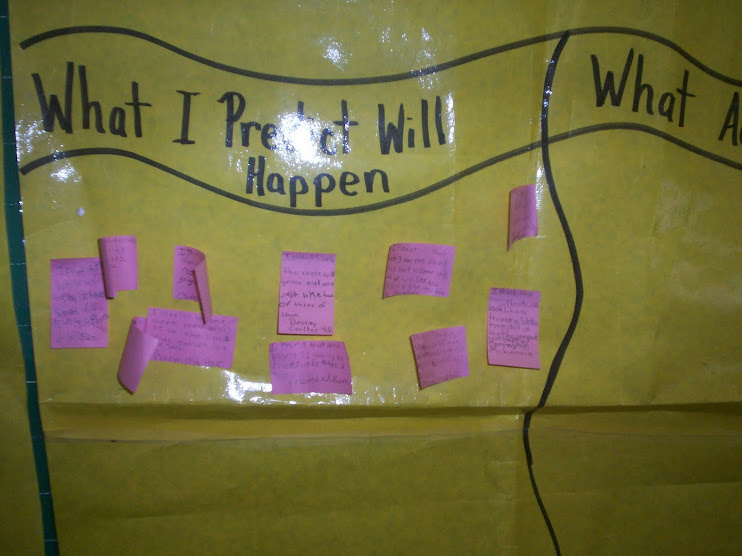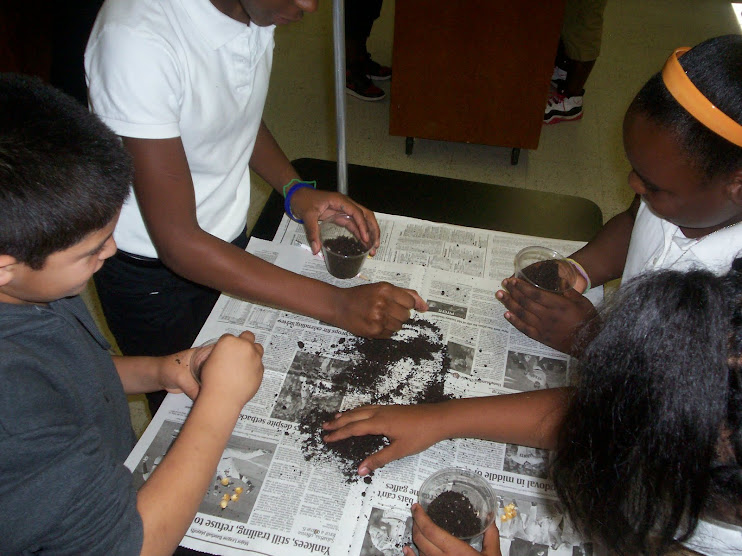Processes:
• Read fluently.
• Engage in discussions around text using Accountable Talk.
• Learn and use new words.
• Locate main idea(s) and supporting details.
• Use a text’s structure, such as cause-effect or comparison-contrast, to get meaning from text.
• Understand characteristics of genres: informational article and biography.
• Interpret and construct graphic organizers containing important information from text.
• Correctly apply the conventions of English when writing.
• Write effectively to communicate a persuasive composition.
• Continue to establish the norms of a literacy learning community based on the Principles of Learning.
• Facilitate Accountable Talk around “Communication”.
• Use small groups to differentiate reading and writing instruction.
• Guide students to identify cause-effect relationships and create graphic organizers to represent them.
• Monitor student fluency.
• Read aloud to students daily, choosing from both narrative and expository texts.
• Guide students to identify main idea and supporting details and create graphic organizers to represent them.
• Provide multiple exposures to unfamiliar terms, including word walls, personal dictionaries, and authentic writing tasks.
• Facilitate students’ use of prewriting strategies to select a topic and organize ideas for a persuasive composition.
• Guide students to design criteria charts for a persuasive composition.
• Scaffold students as they compose a persuasive composition.
• Confer with students throughout the writing process.
• Listen actively to teacher read alouds.
• Respond orally and in a reader response journal to texts heard and read.
• Participate in the creation of criteria charts for folktales, expository writing, and conventions.
• Participate in creating graphic organizers for compare and contrast and main idea with details.
• Read instructional-level texts with fluency.
• Maintain a personal dictionary.
• Use context and structural analysis to solve unknown words.
• Use metacognitive processes to comprehend text.
• Use text coding to aid in comprehension of text.
• Contribute to discussions focused on the theme “Communication”.
• Use graphic organizers to support Accountable Talk.
• Participate in discussions focused on compare and contrast and main idea with details.
• Use prewriting strategies to select a topic for a persuasive narrative.
• Produce a draft of a persuasive composition.
• Complete Major Tasks which leads to a culminating project.
• Students will create graphic organizers and other visual scaffolds to enhance comprehension of texts.
• Students will design and employ criteria charts and rubrics to measure their growth.
• The class will maintain and add to a word wall to scaffold acquisition of new vocabulary.
• Students will maintain personal dictionaries containing both instructional and personally meaningful vocabulary.
• Students will maintain a reader response journal.
• Students will code texts (using sticky notes if necessary).
• Students will post concepts, questions, articles, pictures, etc. related to “Communication.
• Students will create a culminating project.
• Student writing products will provide evidence of their growth in communicating ideas through writing.
Subscribe to:
Post Comments (Atom)































No comments:
Post a Comment